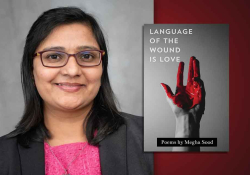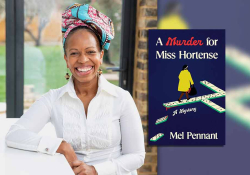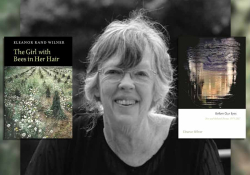The Presence of the Past in Good Night, Irene: A Conversation with Luis Alberto Urrea
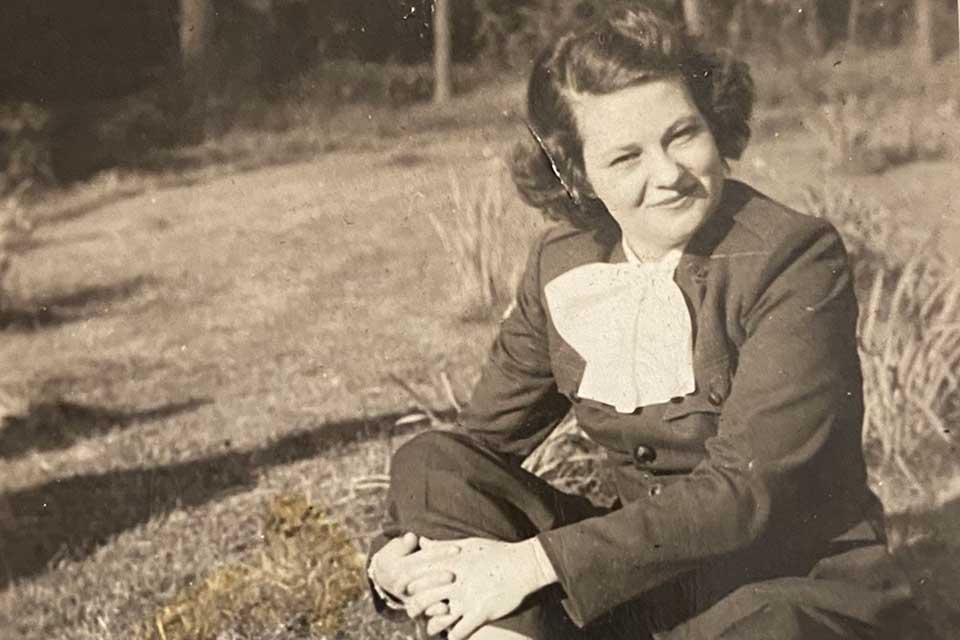
Award-winning writer Luis Alberto Urrea describes Good Night, Irene (Little, Brown, 2023) as “the book I have spent most of my life preparing to write.” This novel is inspired by his mother, Phyllis Irene McLaughlin, and by Jill Pitts Knappenberger for their work in World War II as part of the American Red Cross Clubmobile Service. Known affectionately as the Donut Dollies, these women were in the midst of combat as they drove their trucks from one site of battle to another. Urrea was aware that his mother had been one of the 250 Clubmobile women, but not until after she died did he learn that her war buddy Jill was still living and the keeper of an extensive archive. Years of conversations with Jill, research into the Clubmobile corps, and travel to key places of the European theater led to Good Night, Irene’s fictional tribute to Urrea’s mother and her friend Jill as well as other overlooked but heroic women who served in World War II.
A finalist for the Pulitzer Prize for The Devil’s Highway, Urrea (b. 1955) is the author of numerous other works of nonfiction, poetry, and fiction, including the national bestsellers The Hummingbird’s Daughter and The House of Broken Angels (see WLT, Nov. 2022, 6). A 2019 Guggenheim Fellow, he has received many honors including a Pushcart Prize and an American Academy of Arts and Letters Award. He is a distinguished professor of creative writing at the University of Illinois–Chicago.
Piedra, a collection of Urrea’s poetry, also came out in 2023 from FlowerSong, a small press in Texas whose purpose is “to nurture essential verse from, about, and through the borderlands.” Urrea donates his royalties to the press for their next book of poetry as a way, he says, “to use my work to publish other writers.” He does not want to forget his roots: “The milieu that created me always had a kind of communal feeling, so people who had success felt it incumbent upon them to give back. Since Little Brown/Hachette has given me an opportunity to enjoy the writing life, I am able to help somebody up the next step.”
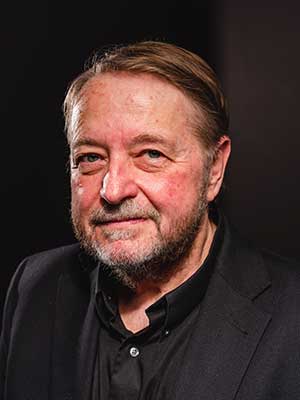
Renee Shea: Originally, you intended to write a nonfiction account of your mother and the American Red Cross Clubmobiles, but you ran into difficulty with your research because so many of the records were destroyed in a fire. Then you met Jill Pitts Knappenberger (who inspired the character of Dorothy Dunford) and saw your way to a novel. That extraordinary coincidence seems a bona fide case of the stars being aligned, yet don’t you think that you knew in your bones that nonfiction wasn’t the book you wanted or needed to write?
Luis Alberto Urrea: If one of my students had turned in a story with such a coincidence, I’d have said, “Oh, come on.” When my wife, Cindy, who is a journalist and mad researcher, found an address for Jill in my mother’s archives, we realized that she might still be alive. As a shot in the dark, Cindy sent a note, and the day Jill received it, she called us. So, the last of the Donut Dollies, who happened to be my mom’s best friend and who drove the truck, was still alive and lived ninety minutes from our house—that’s true.
The novel actually began when we went to see Jill. When this ninety-four-year-old woman opened the door, the first thing I saw was a framed photograph of my mother looking gorgeous. I was taken aback, and she said (she always called me “Louis,” not “Luis”), “Louis, I drove the truck, but your mother brought the joy.” Suddenly, I saw my mom at twenty-seven—not tormented, haunted, or possibly even bitter but as this vivacious New York sophisticate who brought joy to help “the boys,” the GIs. I often think in terms of music, and my mother and Jill deserved as close to a symphony as I could write. That symphony had to be a novel.
Suddenly, I saw my mom at twenty-seven—not tormented, haunted, or possibly even bitter but as this vivacious New York sophisticate who brought joy to help “the boys,” the GIs.
Shea: How much did you know or suspect of your mother’s past before you met Jill? You reference your mother’s diaries, and then there is that “footlocker” where Irene keeps her journals and photographs. Was there a footlocker?
Urrea: Yes, I still have the footlocker with her former name stenciled on it: Phyllis McLaughlin. I was ordered not to go into Mama’s footlocker, but as soon as she went to work, I did. I found photos, some of Buchenwald, nude bodies, blood; and then when she came home Mother had to explain what had happened as much as she could to me at maybe seven or eight years old. She had all kinds of mementoes, including a soldier’s jacket that had a patch of every group she served sewn onto the sleeves, across the back and front. Because she felt that nobody really cared about what she had been through, she gave the jacket to a neighbor who was a World War II veteran. That broke my heart because I thought it was such a precious thing, but it also put me in gear because I realized that none of us understood what she was talking about—not really.
I was fortunate to have this archive, but some of it is unbearable. I cannot read her journals because they’re so full of PTSD, panic, and despair later in life. But in almost every photograph, she looks both glamorous and happy. There’s a wonderful picture in these archives of her—I believe in Bastogne—standing with a bunch of GIs having a cup of coffee just looking insouciant. Jill had extensive archives, even the actual map they used when she was driving the truck with her little notes and pencil marks all over it. I learned a lot, absorbed a lot, and imagined a lot as we went.
Shea: You offer us glimpses into Irene through her “jottings” in her notebook, poetry she reads or recalls. She is such an active participant in the world of war and her work, yet when she finds “a moment,” as she says, she’s the most astute and tender observer. In the midst of combat and concentration camps, she still sees beauty. I think you make her into an artist.
Urrea: I owe that to my mom or my impression of my mom. So many of those details about Irene in the novel are taken from her life. Her family really did live in Mattituck, she moved to Staten Island, they had the antique store. She came from a sophisticated New York world. Yet she spent a lot of time alone, a dreamy child reading books and no doubt keeping notebooks. She loved Edna St. Vincent Millay and the novel Green Mansions, by Henry Hudson, which she read and reread. When I was growing up, the heroes in our house were Twain, Fitzgerald, and especially Hemingway. A Moveable Feast brilliantly begins with the word “then”—and you’re flying from the first word into a story that already happened, but now this is happening. That’s how Good Night, Irene starts: “Then Irene Woodward escaped New York and went to war.” That’s my little homage to Hemingway but, by extension, to my mom.
In her papers, I discovered that my mom had a certificate signed by President Truman. I thought, “Wow, I have a Harry Truman autograph.” Then I turned it over to find that my mom had covered it with drawings. She did little watercolors all over Europe; I have a couple of those paintings. She was an aesthetic person.
All that was part of my upbringing. My mom was the only American in the family—also the only native English speaker, including me. Imagine this woman, this New York sophisticate whose family knew Steinbeck; her uncle would have beers with Albert Einstein and called him “Al.” She had fallen into Tijuana through various twists of fate. She would commute to San Diego to work in a department store and then come home. All day I was in this house with the Mexican ladies, so I learned Spanish first. How heartbreaking it must have been to my mother to have this little baby who couldn’t say words back to her in English. When we left Tijuana, we were trapped in the barrio because of financial struggles, and my Mexican father was adamant that I was a Mexican: he wanted me to be the perfect Mexican, which I was not. He always spoke Spanish to me, forced Mexican music on me; we watched the Tijuana channel on our TV with the rabbit ears. He was a macho man.
My mother was this intellectual arty person who read, read, read. And she won the war. I think they had declared a war over my ethnicity and my intellect—and she won with books. The first author I was exposed to was Dickens. She would read to me—and I had no idea what she was talking about, but it was such a marvel of language. I think weirdly enough Dickens made me become a writer. I would fall asleep listening to her lulling voice, and sometimes she would turn British with her accent: I could see waves in the ocean made of words. That’s how I would fall asleep—these words flowing to me. When she got me my junior library card, every weekend I could be a rich man and bring home fourteen books or whatever the limit was. So, she won through literature.
My mother was this intellectual arty person who read, read, read. I think they had declared a war over my ethnicity and my intellect—and she won with books.
Shea: I’m curious about the fact/fiction alchemy. You reference the “terrible crash that ended my mother’s service.” So, did what happened to Irene in the novel—to some extent at least—happen to your mother?
Urrea: The entire arc of the novel follows closely in her steps. By extrapolating and fictionalizing, I tried to encompass as much as I could, using these women as witnesses for the reader, of what was going on. [In this case], my mother and another woman were in the Alps at night in the dark in a blackout, the headlights taped down to little slits. I don’t know who was driving, but they hit a bomb crater and flipped off a cliff. My mother awoke to her own screams, kneeling on her hands and knees in mud in the dark in her own blood. She could see the burning jeep down the mountain. She would only say, “We never found that girl” who had been with her in the truck. I thought it must be Jill, but it wasn’t. Yet that whole scene in the novel was exactly as she told it to me. They had been warned that there were Germans patrolling the mountains, so when she saw these men lighting up the area with their flashlights, she assumed they were Germans. That’s a direct quote from her: the guy who shone the light in her face said, “Jesus, it’s a goyl,” so she thought not only were they Americans, but they were from New York City! They did climb the mountain with her on their backs and walked miles to a MASH unit.
That scene with the burned soldiers also happened; in fact, it was her last experience in the war. She was then sent off to a reconstructive surgery rehab. I was probably in my twenties when she told me, “I have never lived a day of my life without pain.” She meant that physically, but I suspect she also meant it in a deeper metaphysical way.
Shea: We have to talk about Handyman. He’s pretty much a dreamboat, as people would have called him in that era: he’s a fighter pilot (the Maverick of his day), tough, daring, yet tender. Could you talk about where he came from?
Urrea: For a while now, I have helped nonprofits raise funds, and one way is I offer to give naming rights to a character in one of my novels for a donation. I was at Fishtrap in Oregon, a wonderful writing conference, and I was the emcee for a raffle. People were bidding $15, maybe $25, until a gentleman named Mike Andrews stood up and said “$1,250.” I asked, “Are you sure?” and he said he was. Afterward, he handed me a piece of paper folded up with the name Hans Enricus. I asked what I should know, and he said: “This is my grandson. He is severely disabled, he’s autistic, he’ll never walk, he’ll never talk. I would like you to show me what his life could have been.” I knew this had to be a major character, not a walk-on.
Even now, as I tell you, it makes me misty-eyed. I wondered how I could honor that request. As fate would have it, after we had been with Jill for several years, she showed us her personal album with the most meaningful photos. There was a picture of my mother doing her Greer Garson thing with this damned GI leaning on her possessively and kind of smirking at the camera. I looked at Jill and demanded “Who is this?” She smiled. “Ah, that’s Jake.” I asked, “Who the heck is Jake?!” Jill leaned in and said, “Louis, it was the war. We all had men.” Suddenly Mom’s full humanity showed up. Her lover—are you kidding me? Later on, in Jill’s papers, one of the soldiers had written about the lieutenant colonel, a hotshot fighter pilot named Jake. I gave Hans Enricus as full a life as I could.
But I always like to subvert some of the macho stuff. So, I thought, what if we make Jake a thoughtful man, a singer, the kind of sweet-hearted man who was doing this duty, but what he really wanted to do was go back home to the Walhalla Mountains?
After my mom died [in 1990], I had to go home because she left everything we had ever owned in this house [in San Diego]. I was going through all the stuff. We had these hollow doorknobs from the 1940s with little brass round plugs on flanges, and the one on her bedroom door had fallen off. When I tried to put it back, I found a picture of this handsome man folded up in the doorknob. In the door of the other bedroom that she often used, I found another picture of this man. I knew my mother felt he was there to protect her somehow from all the awful wraiths and shadows. But I’ll never know who that was.
Shea: A nosy question maybe, but I’m a romantic . . . you’ve commented that your parents’ marriage was not a happy one, and here you—the son of that marriage—imagine for your mother a wonderful, passionate relationship in this idyllic setting of Cannes in the midst of war. Is that part of your gift to your mother?
Urrea: She needed respite, sanctuary. She was beset upon by devils and terrible memories, and I don’t think even childhood was good for her. There was a reason why she spent most of her time on Staten Island hiding in the woods. I once had something painful happen to me, and when I went to tell her, she said, “Do you think the worst things in the world didn’t happen to me?” She had this core of iron in her. Still, I think she enjoyed my youth because my friends adopted her. They all called her “Ma” and were always driving her places. She couldn’t bake a cake if you paid her a million dollars, so my female friends would bake me a birthday cake and bring it to our home for Ma to give to me. She loved the guys and took in my friends, musicians who stayed with us on and off. She enjoyed the uproar, hubbub, and the humor. I think maybe part of her was reliving the best of the GIs.
Shea: Seeing your daughter, Chayo, getting to know your mother as you were researching and writing this novel must have been both powerful and immensely gratifying. You were getting to know your own mother in many ways at the same time as your daughter was getting to know her grandmother. How did that feel?
Urrea: It was so touching. Chayo was very close with Jill, who just loved her. I can’t help but think now that she must have seen my mom in Chayo. My mom was 5’3”, Chayo 5’2”; my mother’s eyes are hazel, Cindy’s green, mine blue, and Chayo’s green and blue mixed almost look like my mother’s eyes. One of the most haunting moments of my life was finally going to Staten Island, where I had never been, and when we drove to Richmond Village with the hills, oak trees, and old houses, I suddenly saw my mom. We started to walk with Chayo in front of me, following my mother’s path to the water. It was such a shock to realize that they [the beloved deceased] are gone, yet somehow they are never gone. My daughter, who never met her grandmother, could walk down the same path as she did, where she might have sat to read Green Mansions or Edna St. Vincent Millay poems. At that point, I was super thankful I was working on this book.
Shea: Female friendship seems to be the heart of the novel. Dorothy and Irene become “the sisters,” and Dorothy declares to Irene that they are each other’s family. At one point you write, “Irene and Dorothy were like an old married couple, their outbursts and rhetorical questions a form of connection. A nest of self where they felt safe.” These women may be enormously different people, but they influence and support—and love—each other. We rarely see this in war stories when it comes to women. Despite the horrors of war, or maybe because of it, it’s the men who become that band of brothers. How deliberately did you build that theme, if you will, of women’s friendship?
Urrea: It’s funny that you say this, because Cindy started talking about this very thing. She said that I completely changed the formula of war novels by talking about the female experience of combat, which is different. All the usual tropes start to seem antique. You want to do justice to these two women you love, because I was so taken with the dynamics of that relationship. The third woman in the truck is represented by shifting characters because I wanted it to be clear that this friendship between Irene and Dorothy couldn’t be derailed. They were partners. I’m very happy that the friendship comes across to people. I’ve been so insanely blessed by the women who’ve read the book and contacted me. I feel that maybe I’ve gotten it at least as close to right as I could. I feel that I have been able to leave both women a testimonial that they deserve.
Shea: One of the things I admired about the novel is that you set both Dorothy and Irene up as young women who are looking for a new life. One might even say that they join the Donut Dollies to escape sad and limited lives. Yet through their patriotism and admiration for the GIs, they discover a courage in themselves that they might never have realized they had. Were you thinking of those conflicting or contrasting motivations as you brought these two characters to life?
I’ve been thinking a lot about Joseph Campbell, wondering who will write the heroine’s journey, a new paradigm.
Urrea: I’ve been thinking a lot about Joseph Campbell, wondering who will write the heroine’s journey, a new paradigm. My mother was escaping a “bad” romantic relationship: all I ever heard was that he physically hurt her. Her uncle and cousin had been heroes in World War I, so she had grown up with these former soldiers. One of her uncles, a handsome Tyrone Power–looking young man, killed himself. The nightmares of the war would not leave him in peace. Although that haunted my mom, she was quite patriotic and wanted to serve, yet she was also fleeing all of it—the family, the milieu, this terrible relationship.
Jill was very close to her twin brother, Jack. The family lore was that Jack came first and Jill came tumbling after! When Jack went off to war, she wanted to go with him, but all there was for her was administrative stuff or being a nurse, and she wanted to go to the front lines with Jack. She was a farm girl who knew how to drive trucks and tractors. When she found this Clubmobile corps—the Red Cross, front lines, big truck—she signed up. That’s how these two women met—one fleeing from something, one fleeing to something.
When they were trapped in the siege of Bastogne, Jill found out that her brother was in command of the next town north. She went to see him, and they had a wonderful reunion. While she was coming back, the town was shelled, and he was killed the next morning. That changed everything for her forever. I promised I would visit his grave in Europe and put flowers on it for her, but I haven’t done that yet.
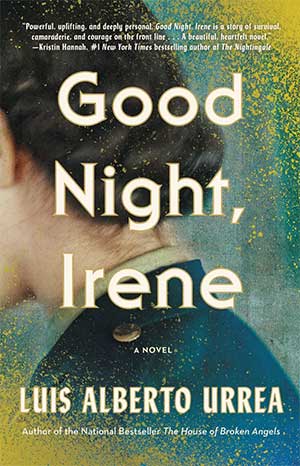 Shea: I read about the cover by Lucy Kim. Did you have any input into its design? Did it speak to you the moment you saw it?
Shea: I read about the cover by Lucy Kim. Did you have any input into its design? Did it speak to you the moment you saw it?
Urrea: There’ve been a number of World War II novels featuring lively young women having an adventure, and they all have the same cover: a woman seen from behind, her skirt kicking up. The first cover was a little bit that way. I didn’t want that because I didn’t think that picture captured what I was trying to get at. It was interesting, though, because when I first showed the galleys on Facebook with the current cover, a couple of angry women wrote about “another dismembered woman on a book cover.” I wrote back saying, no, she is not dismembered; she is turning away from atrocity, hiding her face from the overwhelming shock, which is the shadow around her. The more I looked at that cover, the more I realized that Lucy Kim had captured the soul of the story. I’ve grown to love it just in terms of the imagery. Try as we might, we can never really know Irene or Dorothy. Both are guarding shadows. The delicacy of the woman’s neck as she looks away from all that is behind her captures the vulnerability of Irene. I think my mother would like it.
Shea: The title echoes a popular song first recorded by the blues singer known as Leadbelly. Were there several iterations to get to that title?
I was thinking of Jill’s anger at Tom Brokaw writing The Greatest Generation with no mention of the women. She wanted a band of sisters!
Urrea: You’re always thinking about it. I wanted the title to have resonance, to be instantaneously evocative of the times. Of course, my mother’s name was Phyllis Irene. In the epigraph, there’s a line of a song by Joan Manuel Serrat, a Spanish balladeer, from his beautiful song called “Irene”: “I cannot understand why you can pass by and not see her.” That’s really the point of the book—the meta-message—women who are forgotten or ignored. How could you not have seen these people? I was thinking of Jill’s anger at Tom Brokaw writing The Greatest Generation with no mention of the women. She wanted a band of sisters!
“Good Night, Irene” is just a great song. So what would Handyman do to try to comfort his lover Irene? He surprises her by singing this. The military then was very segregated, and Black soldiers had a hard time, but this guy, a musician himself, plays with Black musicians. I was trying to break all the stereotypes that I could, and in that way honor people in the book. So, for example, Captain Walker is based on Frank X. Walker, the first Black poet laureate of Kentucky and founder of the Affrilachian Poets. I thought it was interesting to ask whether when you’re under fire, you’re in trouble, if it really matters that somebody is Black, Indigenous, or Mexican? You’re there to keep one another alive. I try to amass good spirits in the book, and I represent people as best I can. Not to get political, but I felt that amidst the rise of super angry, semifascist vibes in America, it was time to gently suggest this is what America is about.
Shea: I’m mindful of not giving away the ending, but it’s so—right. How did you get there?
Urrea: I realized the book was getting kind of long, and I wouldn’t be able to write an exegesis of those elder years, so I worked hard at condensing it. I was helping a friend who was writing a mystery—and I love mysteries. I told him, “I stole from you because I realize you guys often give us a Mohammed Ali rope-a-dope: we think we know what the end is, then boom, you hit us with something else.” I thought how much fun it would be to take a weird turn at the end of my book. I’d have to trust my readers not to give up, I’d have to keep it interesting enough to make readers say “what?” until you realize there’s a short but very accelerated version of the novel you’ve just read. I was also writing a book I wanted my mom to like, so there was no way I was going to write some hopeless downer, social-realist, doesn’t-it-suck-to-be-old ending.
Shea: You’ve said that through this novel, you finally gave your mother a happy ending. So what would you like to say to her (that is not in this book) if she were here right now?
Urrea: I probably would tell her, “Mom, I did the best I could.” I was so frustrated during her life because so much of what I tried didn’t work; I could not penetrate all the pain, sorrow, and regret. But I think the best thing about me is the art I’ve been able to make. So I was able to take the best I could do for my mom. Then, I’d probably apologize for the sex!
Shea: On that note, Luis, many thanks again for writing this wonderful book.
April 2023
Editorial note: This conversation took place over Zoom.
An Excerpt from Good Night, Irene
by Luis Alberto Urrea
The difficult job began in the afternoons, when everyone watched for returning missions. The base became tense, silent, with all eyes on the sky as they waited to see who didn’t come home. They searched for smoke trailing across the sky, which signaled B-17s missing engines. These planes were uncanny. They could fly with huge holes blown through their fuselages. They could fly with half a tail. They could fly with pieces of their wings missing. Everyone had heard the legend about the Fortress that flew back across the English Channel with no cockpit – no front end at all. A ghost ship. And the story was that it had landed itself.
They all waited deep into the night. More than once, Irene and Dorothy never got back to their billet. They waited until sunrise and began the morning service all over again. On those days, in spite of their efforts to buck each other up, they burned their hands and scalded themselves and cursed, but still called each guy “honey,” or “brother,” or “babe.” By noon they would be asleep on the floor.
It had not taken them long after arriving at Glatton to understand that their service was not truly about the donuts and coffee. They had seen enough boys fail to return from a morning flight. The real service was that their faces, their voices, their sendoff might be the last blessing from home for some of these young pilots. The enormity of this trivial-seeming job became clearer each day.
Editorial note: Excerpted from the book Good Night, Irene, by Luis Alberto Urrea, copyright © 2023. Available from Little, Brown, an imprint of Hachette Book Group, Inc. All rights reserved.



